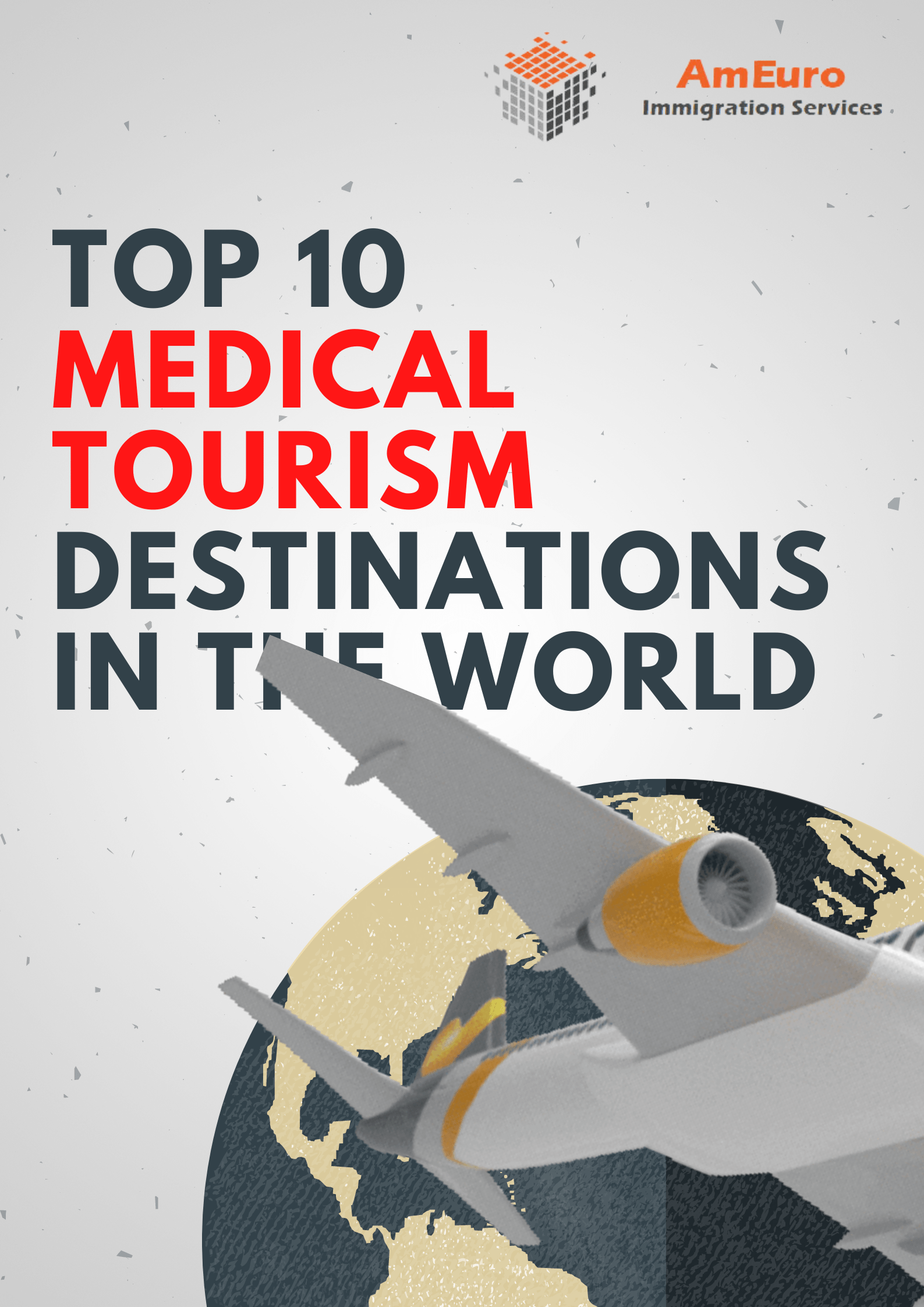With rising healthcare costs in the US and the rise of health tourism destinations that offer quality and affordable healthcare perked up by a beautiful travel experience, Americans are scampering to book appointments with healthcare providers far away from home. Yearly, millions of patients travel from countries lacking healthcare infrastructure or less advanced in a particular area of medical care to countries that provide highly-specialized medical care.
This has birthed a robust global medical tourism market that was worth over $37 billion in 2019. Patients book flight trips to countries for various medical procedures ranging from cosmetic surgery, dental work, to orthopedic procedures at affordable rates. For the health tourism destinations and healthcare providers, the competition is fierce, requiring an interplay of factors to drive medical travel and improve their brand in the medical tourism market.
According to the Medical Tourism Index, which assesses the attractiveness of countries for medical travel, a country’s economy and public image, healthcare costs, and quality of care are the major factors that drive medical tourism growth in a destination.
Using these metrics, here are the top 10 medical tourism destinations in the world.
Canada
Canada’s rank as number one in the 2020 edition of the Medical Tourism Index comes as no surprise as the second-largest country in the world boasts of a robust tourism industry that attracts more than 14 million Americans each year. Its proximity to the US affords the country a massive influx of tourists and patients who seek to bypass the long wait times and high healthcare costs at home.
Canada immigration consultants in Delhi
Canada ranks high in its reputation for offering quality and highly-specialized medical treatments and top-of-the-line healthcare facilities. This has, however, created long waitlists for major medical services in the country, which has also set off a rise in outbound medical tourism in the country.
Singapore
Singapore comes second-place in the Medical Tourism Index, hitting top spot in ranking for the quality of healthcare facilities and services in the country. As of 2019, more than 500,000 foreign tourists visited Singapore for its affordable and quality healthcare services.
Singapore recently set up International Patient Service Centers (IPSCs) that act as medical travel agencies to mediate between international patients and Singaporean healthcare providers.
Gleneagles Hospital is one of the best hospitals in Singapore, offering excellent medical services with state-of-the-art facilities and well-trained specialists.
Seeking health care in Singapore saves a patient 25% to 40% of what they would have spent on the same service sin the United States. For example, heart bypass surgery costs $140,000 in the US and $25,000 in Singapore. A hip replacement surgery which costs over $45,000 in the US can be done for about $13,000 in Singapore.
Japan
Japan ranks as one of the most developed healthcare systems in the world, by every measure. Leading recent advances in technology and medicine, Japan continues to deliver top-notch healthcare services to citizens and foreign tourists, most of which come from mainland China.
According to the country’s Foreign Ministry, the number of medical visas issued to international patients jumped from 70 in 2011 to 1,650 in 2018, with medical visitors attracted to the country’s top-line cancer treatment centers and expertise in cosmetic surgery.
Low cost of care is also a major driver of Japan’s inbound medical travel. Hip replacement surgeries that cost $30,000 in the US are done at $4,126 in Japan, saving more than 70% of treatment cost in the US.
Spain
Spain is known as one of the most visited tourist destinations in the world, with a tourist profile that pulls tens of millions of tourists every year. The country is ranked high by the MTI as the choice medical tourist destination in Europe as it offers foreign patients excellent healthcare services with a beautiful travel experience.
Spain attracts a growing number of international tourists from the Middle East, North Africa, and the BritishIsles, many of who visit the country for advanced orthopedic, cosmetic, and dental procedures.
Spain offers quality healthcare services at a fraction of the cost in US and UK hospitals. Cosmetic procedures such as face lift and breast augmentation that cost as much as $15,000 in the US cost an average of $5,000 in Spain.
Spain boasts of several hospitals that are accredited by the Joint Commission International, including the renowned Hospital Universitario de Madrid and Sanitas Hospitales in Madrid.
UnitedKingdom
The UK ranks fifth in the global ranking of medical tourism destinations by the MTI. The UK is home to renowned medical institutions including the London Orthopedic Clinic, Birmingham Children’s Hospital, and the Cambridge Complex Orthopedic Trauma Center, known for top-quality healthcare services.
The UK is also a choice tourist destination center, welcoming more than 31 million international tourists every year, many of whom are attracted to the rich cultural heritage of the Great Britain.
Cost is also a key factor thatdrives millions of international patients to the UK. For instance, a knee replacement surgery, which costs over $30,000 in the United States, is done at less than $20,000 in UK hospitals.
Dubai
Dubai is known for its ultramodern architecture, high-rise buildings, and luxury shopping. Dubai, with a population of more than 9.4 million welcomes more than 10 million tourists every year. The congenial environment and beauty of Dubai gives a boost to travel experience for millions of international patients that arrive Dubai for world-class care.
The Medical Tourism Index ranked Dubai the top medical destination in the Arab region, as it boasts of world-class hospitals and international doctors across several specialties. Dubai welcomes medical tourists mainly from Asia and neighboring Arab and Gulf countries, and some trips from European and African nations.
Dubai launched the Dubai Health Experience (DHX) in2018 to boost its medical tourism brand by strengthening its healthcare facilities and boosting patient experience through international patient departments.
Costa Rica
Costa Rica is fast rising as a leader in the medical tourism market. Known for its beautiful sights and competitive prices, Costa Rica welcomes millions of medical tourists from neighboring countries including the US and Canada
This Central American country has ranked high in dentistry and cosmetic surgery – above Canada and US – consistently in the last few years. The country is also building a name in the fields of eye surgery, cancer therapy, and bariatric surgery.
The CheTica Ranch located in San Jose provides exotic recovery retreats for medical travelers for patients who relish recovery in a relaxing ambiance. This ranch is also staffed with highly-trained nurses to cater to the medical needs of these patients as they recover.
Cost of healthcare services in Costa Rica is 45% to 65% lower than in the US, saving patients a lot of money.
Israel
The global Medical Tourism Indexranks Israel as the 8th top medical tourism destination in theworld, citing the large pool of tourists that visit the Dead Sea and themassive drift of medical tourists seeking IVF and other fertility treatments inthe country.
Israel ranked high in internationalreputation, patient experience, quality of healthcare, and accreditation ofhealthcare facilities in the MTI.
The renowned Sheba Medical Center,which is known for its excellence in complex surgical procedures, launched an international medical tourism division that offers medical services to thousands of international patients from around the world including Russia, Cyprus, Georgia, and the US.
Abu Dhabi
The capital city and the largest emirate in the United Arab Emirate, Abu Dhabi, has built a strong medical tourism platform that can see it emerge the best in the region.
The emirate launched the Abu Dhabi Medical Tourism e-portal in 2019 that provides international patients with details of all the medical offerings and healthcare facilities in the city. Prospective patients can also access medical tourism insurance packages as well as other tourist services such as hotel bookings, transportation, and recreational activities via the e-portal.
Healthcare facilities in Abu Dhabi comply with strict quality rules set by the city’s Department of Health, ensuring they deliver nothing short of top-quality care.
Best Immigration Consultancy in Delhi
Besides enjoying the scenic views and the beautiful tourist attraction sites in Abu Dhabi, patients visiting the region will also enjoy affordable rates for medical services. For instance, a prostate surgery, which costs $10,618 in the US, costs about $7,896in Abu Dhabi.
India
India is one of the major players in the Asian medical tourism industry, ranking first in the medical tourism dimension of the MTI. India is one of the most visited countries for health care, with an expanded visa policy that eases travel for medical tourists. The medical visa policy allows patients to stay up to 60 days and also offers a medical attendant visa for blood relatives that wish toaccompany the patient. The Indian government launched a medical tourism portal to provide patients with access to their network of healthcare facilities and a list of medical services available in the country. This allows patients schedule appointments with healthcare providers and even book for other services including accommodation and recreational activities before their arrival.
Get More- Visa Services in Delhi










